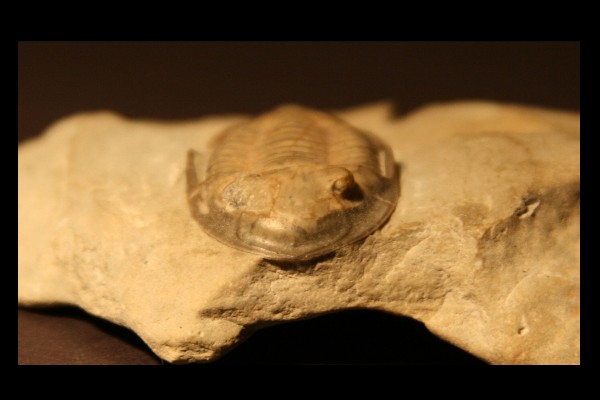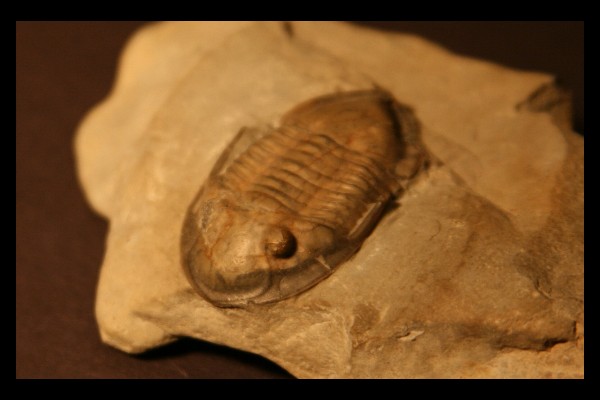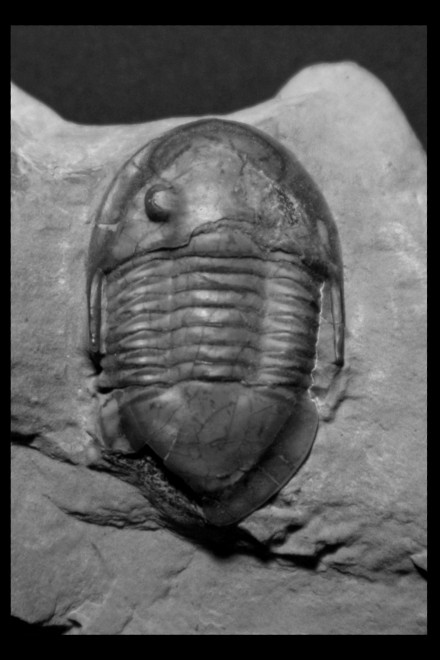
Specimen description :
- Complete specimen lacking the right eye and a bit of the pygidial border.
- flat on matrix.
- Total size : 38 mm
- Upper Ordovician. Arnheim Formation.
- Highland County, Ohio

Isotelus maximus LOCKE 1838
Isotelus maximus LOCKE 1838 is the official state fossil of Ohio, which attained impressively large sizes (up to 15 inches for complete Ohio specimens). Two species of Isotelus are known in the Ohio - Indiana - Kentucky Upper Ordovician outcrop belt : Isotelus maximus LOCKE 1838 and Isotelus gigas DEKAY 1824. Isotelus maximus LOCKE 1838 is easily recognized with its genal spines that retreat in relative length with ontogeny.
The most prolific locality for Isotelus maximus specimens is Flat Run, east of Mt. Orab, southwestern Ohio, USA.
 |
Specimen description :
|
 |
|
Anterior view of the cephalon. |
Antero-lateral view. |
Diagnosis :
|
Order
|
Asaphida
|
SALTER 1864
|
Order including 1/5 of all the species of Trilobites,
it mostly regroup librostoms of various morphology, in which the most advanced
families do present a ventral median suture early visible in the ontogeny
( "asaphoïd" protaspid larvæ).
Occurrence : Middle-Upper Cambrian boundary to upper Ordovician-lower Silurian.
|
|
Superfamily |
Asaphoidea |
BURMEISTER 1843 |
Occurrence: Middle Cambrian to Ordovician.
|
|
Family
|
Asaphidæ |
BURMEISTER 1843 |
Family tends toward loss of apparent segmentation of cephalon and pygidium, obsolescence of axial furrows and deep notching of posterior margin of hypostoma.
|
|
Subfamily |
Isotelinæ |
ANGELIN 1843 |
Members of the group A :
|
|
Genus |
Isotelus |
DEKAY 1824 |
Cephalon and pygidium mostly with porrly defined flattened border.
|
|
Species |
maximus |
LOCKE 1838 |
|
Discussion :
The key differences between Isotelus maximus and Isotelus gigas are:
Isotelus maximus : genal spines in all holaspid stages, a larger maximum holaspid size, and a semicircular cephalic & pygidial outline.
Isotelus gigas : lack of genal spines in large holaspids, a smaller maximum holaspid size, and a subtriangular cephalic & pygidial outline.
Complementary pictures :
 |
|
Dorsal view of the specimen.
|